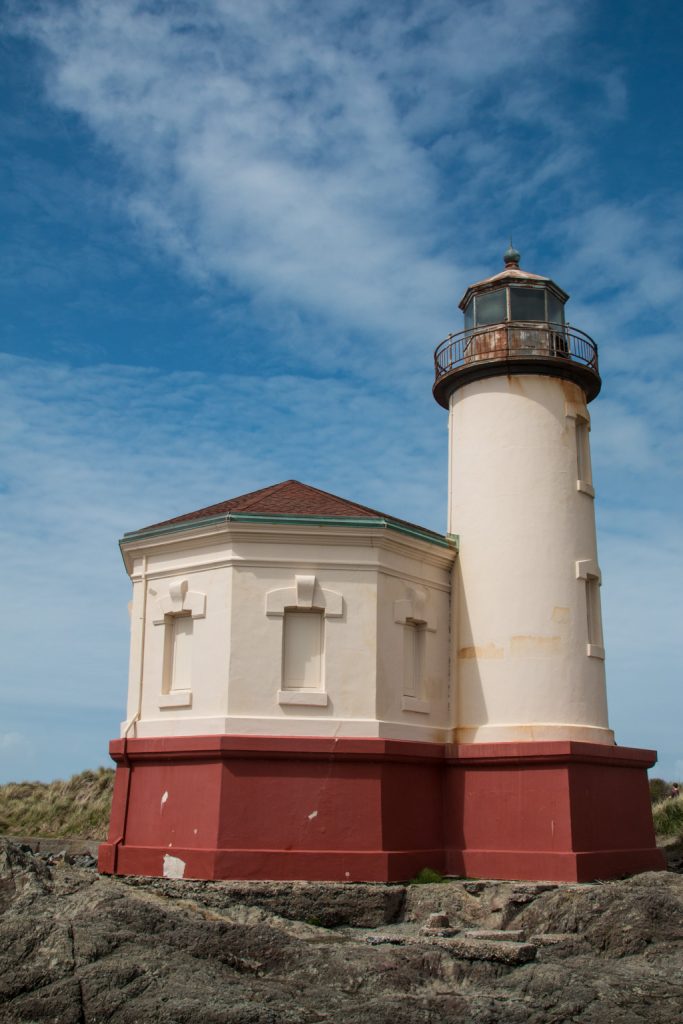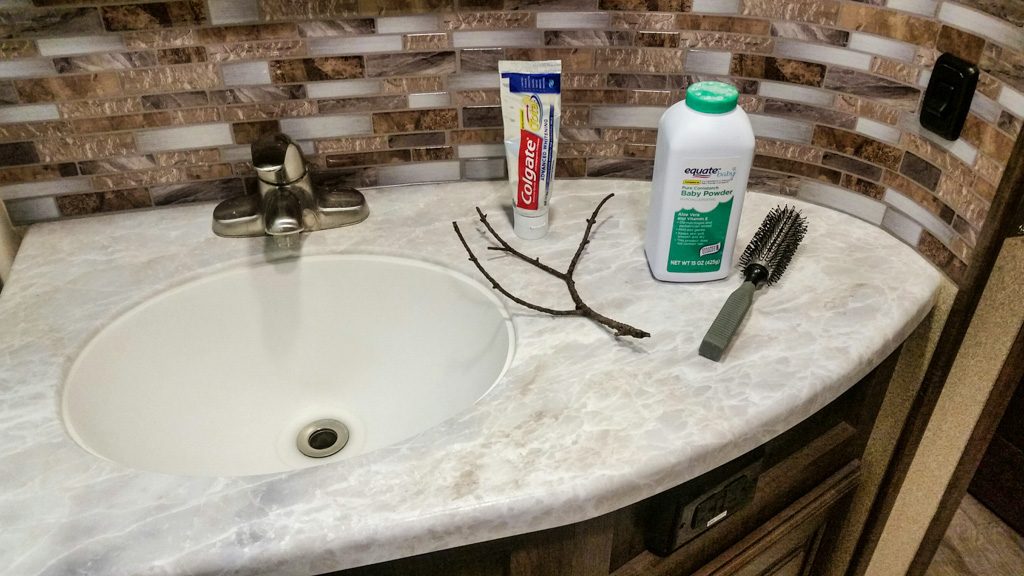From Sequoia National Park, we boogied pretty quickly up to the Oregon coast. We wanted to encapsulate this part of the adventure into one post rather than sending several with only a day or two apart, so it is a bit long. Go get a cup of tea or other beverage of your choice.
Here’s what I really wanted the title of this post to be, but it is (way) too long!
The Oregon Coast: Waves, Windy, Winding Roads, Weed…
Let’s get the “Weed” out of the way. Oregon was the first state to decriminalize marijuana possession in 1973, although it didn’t legalize recreational marijuana until 2014—two years after Colorado and California. There are “Cannabis Dispensaries,” “Bud Barns,” and “Pot Shops” everywhere you look. It seems every small town has one or two. No, we didn’t partake.
The Oregon coast is amazingly beautiful. We went up US 101, which runs near the coast—at times, right along it. There are many sea stacks (very large rocks out in the water), which together with frequent cliffs on the shoreline make excellent targets for the waves to crash against. It is frequently very foggy!


In the sections below, you can paste the latitude and longitude into Google maps to see where we camped…
Gold Beach: 42.536509 -124.396648
We had been advised to check out the area around Gold Beach by many people. We found Honey Bear RV Resort and Campgrounds a little north of there. As we drove in the campgrounds’s driveway, I noticed two small elk in a field. Cool! We decided to have dinner in the campground’s restaurant (is that what makes it qualify as a “resort?” I still don’t understand the distinctions…), and I was carrying my camera with me as I often do in new places. A man came up to us, and asked if we’d like to get some pictures of elk. Of course! Our order had just gone into the kitchen so we had some time.
We followed the man out of the restaurant, down the road a bit, and then he turned and said, “I normally don’t let campers in here, but this is the best place to get elk pictures.” He was the campground owner!

Kathe and I walked down to the beach just before sunset. Our first night on the coast…

Gold Beach is just past the north end of the Samuel H. Boardman State Scenic Corridor. Coming north from California, we had decided that we would drive past the sights to get to the campground, and then return south without the trailer on our first day at Honey Bear to see all (OK, “some of”) the scenic pull outs the state has marked. We had divided the coast roughly into fourths, with the idea that we’d day trip up and down the coast from our campsites in order to see the sights. Rocks and water! The same draw that made us love Acadia so much.


Aside… Oregon has a crazy number of State Parks—255, to be exact. Incredibly, 93 of those state parks are along the coast! Granted, many of are very small with some being little more than a parking lot for beach or view access. But fifty seven of them have campgrounds, and we made use of two of them.
The Oregon Beach Bill was signed into law in 1967 and
established a permanent public easement for access and recreation along the ocean shore seaward of the existing line of vegetation, regardless of ownership. A policy soon followed that provided for public access to the 362 miles of beach at regular intervals.
The next day we headed north on the coast for another day of sea-gazing… This brought us past three of the nine lighthouses on the coast, and many more spectacular shore vistas!




Florence: 43.922106 -124.113042
Dunes… The only sand dunes I had experienced were on the Outer Banks of North Carolina’s shore. They were big! Ummm… Not as big as Oregon’s dunes.
The Oregon Dunes National Recreational Area stretches for over 40 miles, and encompasses 31,500 acres. For part of its stretch near Florence, it is bordered by the Honeyman State Park, our next stop. The dunes near Florence are not the tallest in this huge dune field, so where we saw them they weren’t as tall as in NC. Our particular campsite was backed by a steep, thickly vegetated hillside. I’ll guess it was 50 to 60 feet high. I found a nearby trail and went up. When I got to the top, the other side was sand dunes! We were right on the edge of the recreational area.
Kathe and I hiked into the dunes in another spot a few miles away. There, the dunes were heavily grassed, and the dunes went right down to the beach.


Depoe Bay: 44.860257 -124.04309
They advertise the Sea and Sand RV Park as “Camping on the beautiful Oregon Coast.” They aren’t kidding! Driving to our campsite we thought we were going to drive right into the ocean.
Come ride with us, and remember that we have over seven tons of trailer pushing us down the hill.
We had possibly the best space in the campground (94, if you want to book it). There were no more sites on our door side, so no neighbors there, and we were on the third of three tiers, about 60 feet above the ocean with a completely unobstructed view! Simply amazing. Apparently this site is usually booked a year ahead of time; we had called about a week and a half before, so someone must have just cancelled! Hooray for us! (As we were getting ready to leave, another camper stopped by to tell us that they had just booked the site for this same week, next year…)


There is a downside to camping this near the ocean. The waves make a lot of noise all night. I know… poor me.
Someone turn the waves off! I can’t sleep!
Tillamook: 45.428327 -123.937862
This was the least picturesque stop on our trip up the Oregon coast. There is a large dairy processing plant which produces mostly cheese but also ice cream and yogurt, known locally as “The Cheese Factory.”
“Are you going to the Cheese Factory??” “Have you been to the Cheese Factory?” Everyone in the area wants to know… Apparently it is The Big Thing in the area.
They have an interesting self-guided tour via a glass-walled walkway above the factory floor. I was surprised to learn that it takes less than 24 hours for the milk arriving in the tanker truck to be turned into a block of cheese ready for aging. According to a Tillamook website, the warehouse next door where they age the cheese accounts for about ten percent of the nation’s cheese supply. I guess it is a Big Thing!
Coastal scenery wise, there is a “three capes drive,” which held promise. But most of the time the road was behind trees, and the access to the capes was via hikes of a mile or more. It was cold and raw, and we decided to not hike it.
We did get to one part where we could drive to the shore. We almost got stuck one more time in deep loose sand! Fortunately, we didn’t have the trailer with us this time…
There at the beach we saw these folks having fun on the winds from the ocean hitting the dunes to give them lift.

Wildlife
In addition to the elk, above, we saw sea lions at several locations, as well as large colonies of birds.




Astoria / Fort Stevens:
46.181835 -123.965693
Fort Stevens is the farthest north state park in Oregon, and also the largest. We were in a very nice campground of over 500 sites, which actually had full hookups for RVs: 50 amps, water, and sewer. Sewer hookups are very rare in state parks! We saw another Solitude (our type of trailer) with a different floor plan and much more storage capacity. That—or something like it—might be a next camper… but certainly not this year. We’re just getting this one the way we like it!
The address of the park is on Peter Iredale Rd., which got me wondering… “Who was Peter Iredale?”
Peter Iredale
That was the wrong question. Not who, but what.
The Peter Iredale was a four-masted, steel hulled sailing ship around the turn of the 20th century that carried grain from this area to Australia. (Peter Iredale was one of the owners of the company that owned the ship, so there is also a who—but he’s not the reason that “Peter Iredale” is a common place name in the area.)

The ship was wrecked here during a storm in 1908. Much of her hull was cut up and sold for scrap, but the forward part was left on the beach. Nature will eventually reclaim her, but for now she is an interesting subject for photography.


South Jetty
The land currently occupied by Fort Stevens forms the southern portion of the mouth of the Columbia River, a vital, but very dangerous shipping lane.
The geography was constantly changing as storms moved the land, and deposited much of it on the bottom of the channel, increasing the navigational challenges. The area needed to be stabilized.
There were three jettys built by the US Army Corps of Engineers at the mouth of the river, of which the south jetty is one. It was started in 1885, and the whole project of controlling the mouth of the Columbia took 50 years.
The jetty is four and a half miles long and projected into the ocean one mile; at the time of its completion it was the longest in the world. To build it, they had to first build a railroad track on trestles out into the ocean to transport the rocks.


The Fort
So why is this “Fort Stevens” State Park?
Fort Stevens was the primary installation of three forts guarding the mouth of the Columbia River. The fort saw duty in the Civil War, Spanish-American war, and World Wars I and II. It started as an earthen construction in the Civil War and was enhanced with large concrete installations for several batteries of ten inch rifles by the First World War. Improvements in ship construction (thicker hulls and steel decks) made those guns largely obsolete by WWII, at which point the river was primarily guarded by a mine field comprising up to 148 mines that were electrically controlled from Fort Stevens. (I had assumed that they were contact mines, but not so.)
Fort Stevens holds the distinction of being one of only two places in the continental US to be fired upon by a foreign power. On June 22, 1942, a Japanese submarine fired nine five inch projectiles at the fort. They landed without harm, and the fire was not returned from the fort. Later, the captain of the sub was quoted as saying that if he had known how many large rifles were at the fort, he would not have been anywhere in the area!
The guns are long gone and the emplacements are deteriorating, but some are still open to be wandered in and on.




What’s next?
We have one more stop before we cross into Canada, to visit with Beth, Jon, and the kids. Can’t wait to get there!
We’re starting to plan our travel after we visit with Beth’s family, and are starting to run into problems finding a campground with available space. We had heard about this, but hadn’t experienced it up until now. We’ve plotted our travels up through the second week of June, and now have to slot in the remaining two weeks until our grandsons Graham and Dean join us to visit National Parks in Utah! Lots of possibilities…































